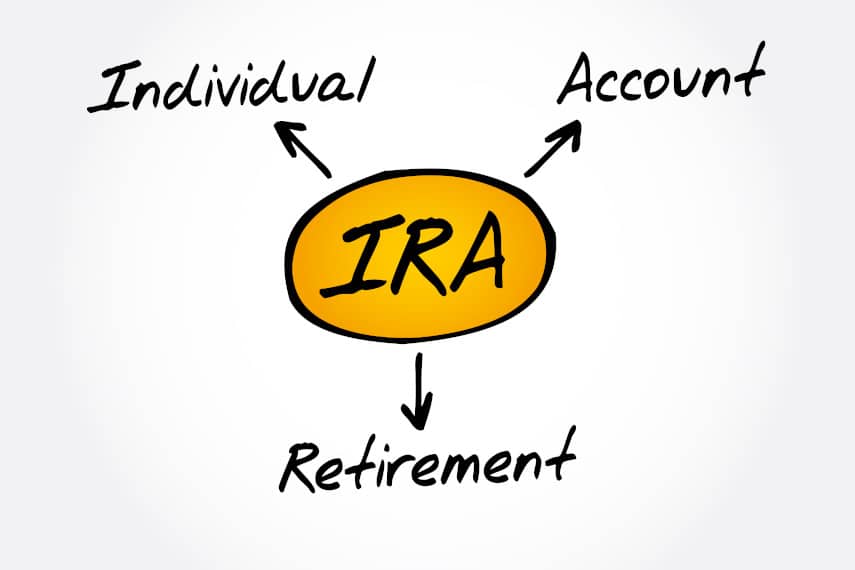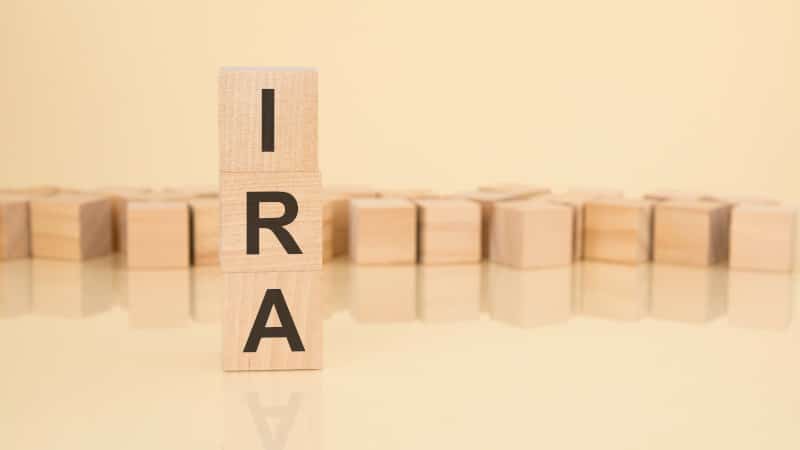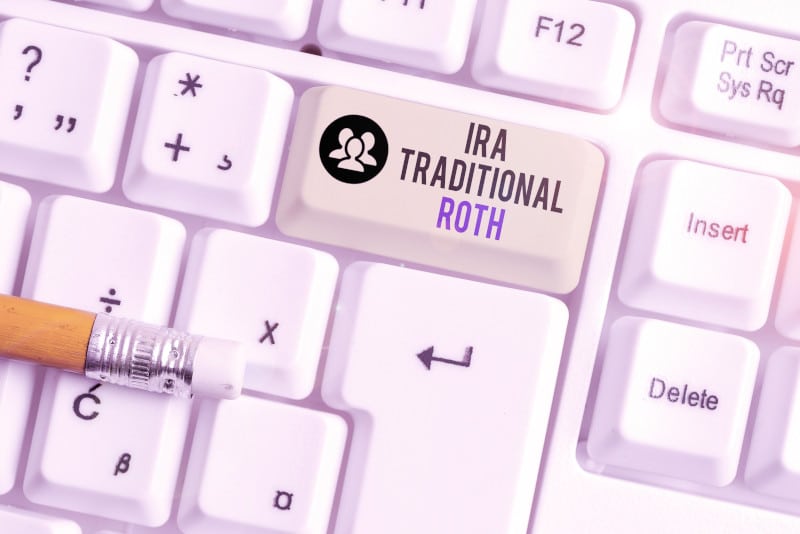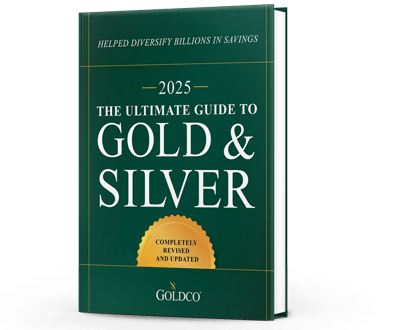
Do you already have an IRA? If not, have you been thinking about starting an IRA?
If you’ve done any reading about IRAs, you’ve probably come across mention of gold IRAs, precious metals IRAs, or self-directed IRAs. And you might be wondering, what do these IRAs offer that a standard Traditional IRA doesn’t offer?
Self-directed IRAs like a gold IRA offer you the ability to acquire alternative assets that can help diversify your portfolio, help defend you against loss during economic downturns, and put you in full control of your IRA holdings.
These types of IRAs can be important tools in your retirement arsenal, if you know what you’re doing. That’s why you need to read up on the advantages that gold IRAs can offer.

What Is an IRA?
An IRA is an individual retirement account that offers tax-free gains to help Americans save money for retirement. The legislation establishing IRAs was passed in 1974, and since that time Americans have saved trillions of dollars in their IRA accounts.
While 401(k) accounts may be the dominant employer-sponsored retirement plan, Americans actually hold more money today in IRAs than they do in 401(k) plans.
Key Points to Consider
- Gold can serve as an inflation hedge, store of value, and safe haven asset
- The gold price has recently set numerous all-time highs
- Starting a gold IRA can be done relatively easily
Types of IRA Accounts
If you want to know the advantages of gold IRAs over standard Traditional IRAs, it helps to know what types of IRA accounts there are.
When most people talk about IRAs, they’re talking about Traditional IRAs. Gold IRAs very often are also Traditional IRAs, but a gold IRA holds physical gold assets that most Traditional IRAs don’t.
Let’s take a deeper dive into the various types of IRA accounts.

Traditional IRA
When most people talk generally about IRAs, they’re probably referring to a Traditional IRA. This is the default IRA type that most people will be setting up when they open up an IRA account for the first time.
Traditional IRAs use pre-tax dollars, and taxes are only paid when you take a distribution. That means all of your capital gains and dividends can accrue tax-free as long as your IRA is open.
Traditional IRAs offer many benefits, and if your income is below certain thresholds, your IRA contributions may even be tax-deductible, which can reduce your current income tax liability.
Roth IRA
A Roth IRA is the next major type of IRA account, and it differs from the Traditional IRA in that it utilizes post-tax dollars. The assets in your Roth IRA also accrue tax-free, and qualified distributions are not subject to taxation.
Contributions to a Roth IRA are not tax-deductible, and there are income limits above which you won’t be able to make contributions to a Roth IRA. Additionally there are some Roth-specific rules such as the 5-year rule when it comes to distributions of earnings.
Roth IRAs are popular with those who think they may be in a higher tax bracket in retirement than they are today. And since Roth IRAs also don’t have required minimum distributions (RMDs) like Traditional IRAs do, they can be popular for those who want to keep their assets working for them well into retirement.
SEP IRA
A Simplified Employee Pension Plan (SEP) IRA is a plan that allows employers to contribute to IRA accounts they set up for employees. Contributions are limited, and employees are not allowed to contribute to a SEP IRA.
Taking a distribution from a SEP IRA is similar to taking a contribution from a Traditional IRA in that it would be considered as income, and subject to a 10% penalty if taken before age 59½.
SIMPLE IRA
A Savings Incentive Match Plan for Employees (SIMPLE) IRA is intended for small employers to start retirement savings plans for their employees. Both employers and employees can make contributions to a SIMPLE IRA.
SIMPLE IRA distributions are subject to general Traditional IRA rules regarding distributions and withdrawals, although if a rollover is made from a SIMPLE IRA to another IRA, it can only be after two years of participation in the SIMPLE IRA.
IRA Account Sub-Types
In addition to these four major types of IRAs, there are further descriptors that can be attached to IRA accounts.
Rollover IRA
A rollover IRA is a term used to describe an IRA account that is funded with money rolled over from another IRA or retirement plan. You can fund a rollover IRA with money from a 401(k), TSP, 403(b), or 457 plan, or from a Traditional, Roth, SIMPLE, or SEP IRA.
Rollover IRAs will be either pre-tax (Traditional) or post-tax (Roth), and the type of rollover IRA you can start will be dependent on what kind of funds you are rolling over.
Spousal IRA
Normally you have to have earned income in order to contribute money to an IRA account. But for non-working spouses there’s an exception, which is where spousal IRAs come into play.
A spousal IRA allows a working spouse to make contributions to an IRA in the name of a spouse who is either not working or who brings in very little income. That account is not a joint account, rather it is set up in the name of the non-working spouse.
This can allow married couples where one spouse is not working to double their annual IRA contributions. Whereas the current IRA contribution limit is $7,000 per year, opening a spousal IRA allows contributions to both the working spouse’s and the non-working spouse’s IRAs, for a combined total of $14,000 per year in contributions.
There are specific rules regarding how spousal contributions work, when those contributions are tax-deductible, etc., which is why it can be helpful to read up on the rules regarding spousal IRAs.
Inherited IRA
An inherited IRA, also known as a beneficiary IRA, refers to an IRA started by someone who has inherited IRA assets from someone else. In some cases when an IRA’s assets are left to you through inheritance, the funds can be rolled over into a new IRA in your name. In other cases, you must take distributions from the IRA.
This inherited IRA can be either a Traditional IRA or a Roth IRA, and the rules pertaining to this inherited IRA will vary depending on whether you’re a spouse or non-spouse of the original IRA owner, and whether the original IRA owner died in 2020 or before. If you inherit an IRA, you’ll want to look at some of the rules surrounding inherited IRAs, which can be very complicated.
Self-Directed IRA
A self-directed IRA is an IRA in which the account holder directly manages the IRA. This allows account holders to hold a wider array of assets than they might otherwise be able to in conventional IRA accounts.

Gold IRAs and Traditional IRAs
When people ask about gold IRAs versus Traditional IRAs, what they’re most often asking about is what the difference is between a gold Traditional IRA and a standard Traditional IRA.
The standard Traditional IRA you’ll find at most brokerages and financial institutions allows you to acquire stocks, bonds, mutual funds, exchange-traded funds (ETFs), etc. Anything the IRA custodian offers as an asset, you can purchase.
But you won’t find gold offered as an asset by most Traditional IRA custodians. That’s for a number of reasons, but regardless of the reasons, you’ll need to find an IRA custodian who specializes in alternative assets like gold if you want to start a gold IRA.
Many IRA custodians only offer conventional financial assets because they don’t want to have to manage alternative assets. In order to open up your IRA to the possibility of owning alternative assets, you would need to start a self-directed IRA.
Self-directed IRAs can offer a variety of different assets to help you diversify your portfolio. Goldco works with self-directed IRA custodians who specialize in administering precious metals IRAs, to ensure that your gold IRA assets are well managed.
Gold IRAs are a type of self-directed IRA, and can be either Traditional IRAs or Roth IRAs. If you start a Traditional gold IRA, you can fund your gold IRA with a tax-free rollover from existing 401(k), 403(b), TSP, IRA, or similar retirement accounts.
If your gold IRA is a Roth IRA, you could fund it with a tax-free rollover from a Roth 401(k) or Roth IRA account, or perform a Roth conversion, rolling over funds from pre-tax retirement accounts into a Roth gold IRA, in which case you would need to pay taxes on the conversion.

Benefits of Owning Gold
There are numerous benefits to owning gold, but there are four in particular that bear mentioning.
1. Portfolio Diversification
One of the primary reasons that many people buy gold is to diversify their portfolios. Even people who would never categorize themselves as gold bugs will sometimes devote some percentage of their portfolios to gold, particularly during times of economic weakness.
All too often people think that buying an index fund or purchasing a smattering of stock and bonds is enough diversification. But real diversification often means purchasing across asset classes, or in different industries or regions of the world.
If your wealth is concentrated in financial assets that rely on the strength and health of Wall Street for their performance, a severe financial crisis could lead to significant losses in the event of a systemic financial crisis. It’s not at all unusual for both stocks and bonds to lose value during an economic downturn.
Because gold very often performs well when financial markets aren’t, its role as a countercyclical asset comes in handy for individuals who want to diversify their portfolios to make it through tough times. And depending on your financial goals, gold could provide you the diversification you desire.
2. Risk Mitigation
Gold can also help lower the risk profile of your portfolio. Gold isn’t generally viewed as a risky asset, as its price tends to move up steadily over the long term.
In some cases, owning gold could lower the overall volatility of some portfolios. For people who are exposed to risky assets with significant price volatility, buying gold can be part of a risk mitigation strategy.
3. Inflation Defense
Gold has traditionally been treated as an inflation hedge, an asset that can help maintain the value of an portfolio during times of high inflation. We’ve been blessed in this country with having relatively little experience with high inflation, but the last few years have been a wake-up call.
Inflation at one point was the highest it had been in 40 years. And even though it has since declined, the threat hasn’t completely disappeared.
That’s why many Americans have turned to gold to help safeguard their hard-earned money, because they believe that gold can help them weather the negative impacts of rising prices.
During the stagflation of the 1970s, inflation peaked at 11%, while the economy was largely stagnant. But gold’s annualized growth rate over that decade was over 30%, meaning that its real inflation-adjusted growth rate was over 20% annualized.
That’s a phenomenal growth rate by any measure, but especially during a time of high inflation and economic turmoil. And that kind of performance in the face of high inflation is why so many people are turning to gold once again during today’s uncertainty surrounding inflation.
4. Asset Growth
Just because gold is traditionally treated as a safe haven or an inflation hedge during times of economic difficulty doesn’t mean that it can’t also be a useful asset when times are better. Gold has actually outperformed stock markets this century, which is quite an achievement.
Today, when stock markets are at all-time highs, gold is hitting all-time highs too. And as the economy faces the prospect of recession, the outlook for gold looks as bright as ever.

Gold in Your IRA
These advantages of gold can benefit you whether you hold gold in an IRA or outside of an IRA. But if you want to hold gold in an IRA, a gold IRA is the only way to go.
Standard Traditional IRAs won’t give you the ability to own gold in a tax-advantaged account. And while it might take a little more effort to start a gold IRA than a standard Traditional IRA, it doesn’t have to be difficult.
In fact, you can start a gold IRA in just three easy steps.
1. Work With Trusted Partners Like Goldco
Goldco has helped thousands of Americans navigate the gold IRA process. We work with established custodians in the industry to give our customers the ability to easily find trusted gold IRA custodians.
Once you sign your customer agreement with Goldco stating that you agree to our terms of business, you can choose your gold IRA custodian and open your gold IRA.
2. Fund Your Gold IRA
Once you have opened your gold IRA, you have to determine how to fund it. One of the most common ways to fund a gold IRA is through a 401(k) to IRA rollover, which can normally be done tax-free.
Expect the rollover process to take 1-2 weeks from the time you first contact your current plan administrator to start the rollover to the time your funds show up in your gold IRA. And once your gold IRA is funded, you can start to purchase gold.
3. Buy Gold With Your IRA Funds
Not every gold coin or gold bar is IRA-eligible. But at Goldco we offer dozens of IRA-eligible options so that you don’t have to determine for yourself whether the gold you’re buying is IRA-eligible.
And because we work directly with mints around the world to source our products, we can guarantee that the gold you buy from us is 100% authentic.
Is a Gold IRA the Right Choice for You?
If you’re looking to diversify your portfolio, hedge against inflation, or preserve your wealth through recession, gold could be one way to do that. Thousands of Americans have already taken steps to try to protect themselves with gold, and you can too.
Whether you want to buy physical gold to store at home, or safeguard your retirement savings with a gold IRA, Goldco has gold coins and gold bars that can suit your needs. Our dedication to quality gold products and stellar customer service has won us over 6,000 5-star reviews and helped make us one of the best gold IRA companies in the country.
Don’t wait any longer to make gold a part of your financial planning. Call Goldco today to learn more about how gold can play a role in preserving your financial future.











